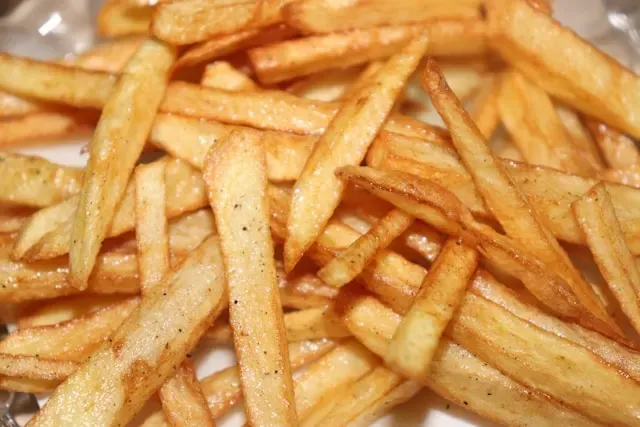Everyone has the same five spirits in their bar: vodka, rum, whiskey, tequila, and gin. They're all great, but every so often the mood strikes to try a cocktail with a little something different. We'd like you to meet three spirits from South America that would make a welcome addition to your next cocktail party.
In case you haven't heard, South America knows a thing or two about partying. From the beaches of Brazil to the mountains of Peru, there is a celebratory atmosphere throughout the continent that represents the diverse cultures as they co-mingle in this unique part of the world. And a big part of the party down there comes from these delicious spirits that possess the same versatility that our American bar standards have.
Get on these spirits now and you'll blow everyone's tastebuds away at your next shindig. We've included the native cocktails that are made in their home countries along with some American classics where these spirits can pinch hit.
Cachaça, One of Brazil's Best
If you were lucky enough to make it down to Brazil last summer for the World Cup, then you're already familiar with their national spirit that's been around since the Portuguese colonized the country in the 1500s. It's a unique spirit that is often misrepresented as a type of rum because both are made of sugarcane and/or molasses.
Naturally this doesn't sit well with Brazilians, who would probably point out that their spirit predates rum in the Caribbean by a hundred or so years and can be sold unaged. Rum, by contrast, must be aged. Each cachaça has its own flavor characteristics based on the barrels that hold it. You'll want to look for cachaças that come from the region of Minas, where artisanal cachaça comes from.
There is only one cocktail you need to know for using cachaça and that's the caipirihna, the national drink of Brazil. To make it, muddle limes and simple syrup and add two and a half ounces of cachaça. Add some ice and shake vigorously. Pour it out into a tumbler and add some more limes. Now you're ready to samba the night away! If you're looking for a more familiar use for cachaça, try making a mojito or mixing it with anything citrus-based or with bubbles.

A caipirihna, the national drink of Brazil.
Pisco—A Forgotten Classic (In the United States)
Two countries, both alike in dignity, lay claim to this unique brandy that is made from any one of eight (in the case of Peru) or three (in the case of Chile) grapes. Chile produces greater quantities of pisco, but Peru exports more of it. There is so much controversy surrounding who invented this spirit that there are even differing theories as to the origin of the word! The bottom line is that it's a delicious and fragrant addition to any bar. Differences in grapes, distillation pots, and barrels produce various colors and viscosities, so have fun discovering which pisco suits your particular palate.

Not picking favorites, but Chile's Kappa Pisco is a solid choice for mixing.
The classic pisco cocktail that everyone knows is the pisco sour, which is made with egg white, like all sours used to be made in the States. One pisco cocktail that originated in the U.S. is the pisco punch, which blends pisco with pineapple juice, lime juice, and simple syrup. If you insist on drinking pisco like a local, drink a piscola (pisco and Coca-Cola) like a Chilean, or drink a chilcano (pisco with ginger ale and lime juice) like a Peruvian. Just be sure not to pick a side in the pisco war.

The classic pisco sour with egg white, simple syrup, lime juice, and bitters.
Aguardiente's Fiery Spirit
You know what you're getting with this spirit, whose name means "burning water" in Spanish. Throughout history the name has been used as a catchall to indicate any spirit distilled from fruit or sweetened musts, but the most famous one in South America is from Colombia. The Andes mountains provide the sugarcane that makes aguardiente and Colombians then flavor it with anise. They drink it straight, while the Ecuadorian version is unflavored and mixed in cocktails.
A simple cocktail that many Ecuadorians make is the canelazo. They boil several sticks of cinnamon to make tea, sweeten it, and add the aguardiente. The result is similar to what we would call a hot toddy. Adding naranjilla juice then makes a naranjillazo. (If you can't find naranjilla juice at a Latin market, try subbing in orange juice concentrate instead. It's not as authentic, but it will still be delicious.)

The canelazo, an Ecuadorian delight.
For a more traditional cocktail that your guests will know, try substituting aguardiente with anything that normally uses tequila. Margaritas made like this are great, but consider also making an aguardiente sunrise, which is just aguardiente and orange juice. Pour some of your homemade grenadine and let it sink to the bottom. ¡Salud!
Increase Your Cocktail Know-How
Learn the golden ratio so you can make a great cocktail without needing a recipe. Stuck with crappy vodka? Here's how to improve its taste. And if you're flying any time soon, here's how to make bad airplane booze taste better.
Cover image via Vi Neves/Flickr; all other photos by Mario Hernandez (unless otherwise specified)



























Comments
Be the first, drop a comment!